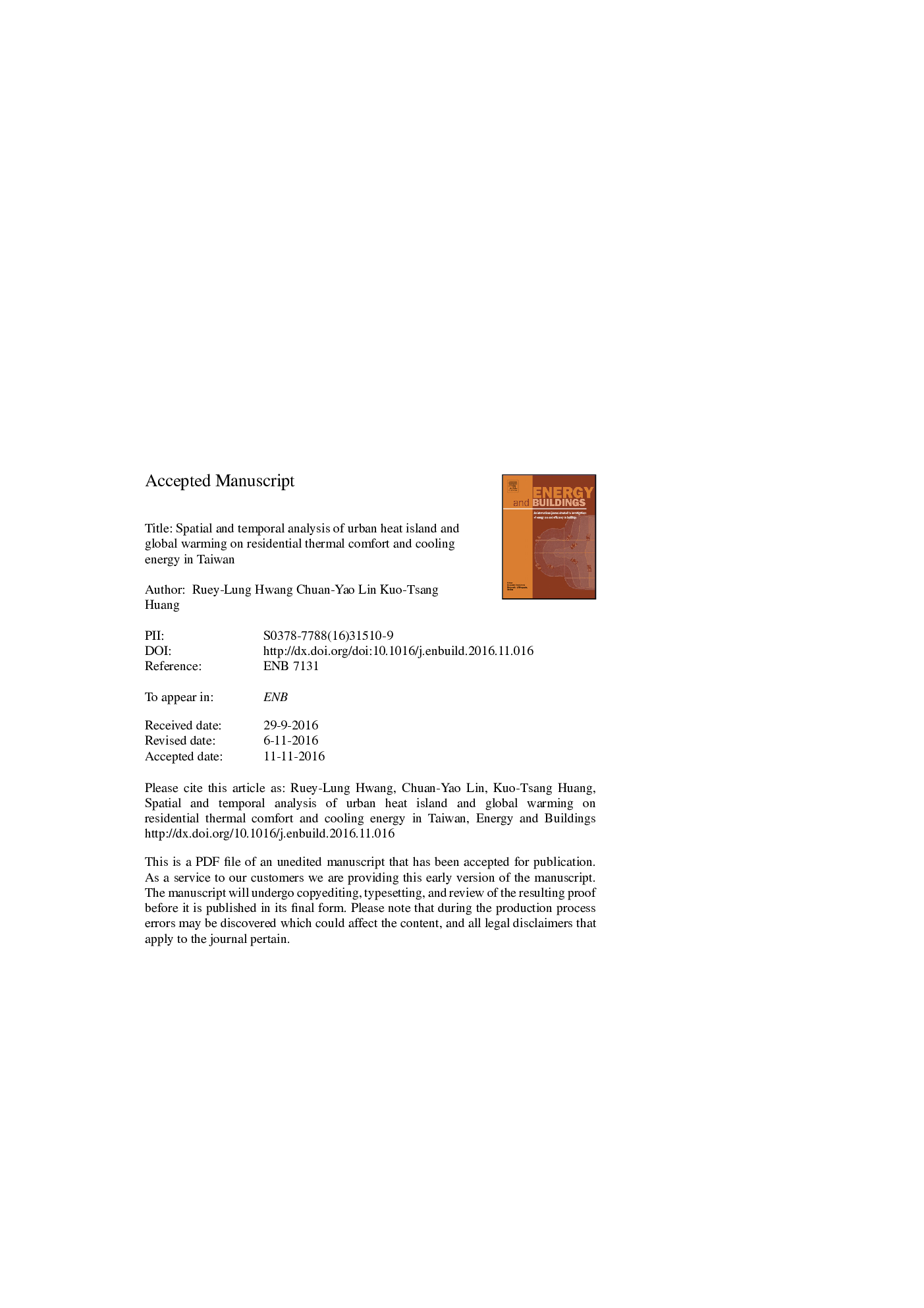| Article ID | Journal | Published Year | Pages | File Type |
|---|---|---|---|---|
| 4918957 | Energy and Buildings | 2017 | 35 Pages |
Abstract
Urban heat island (UHI) and global warming effects will raise the ambient temperature of cities and increase building energy consumption. This paper discusses the residential cooling energy variations imposed by urban warming in the present and future. Data from a dynamically downscaled hourly meteorological model with a grid resolution of 5Â km and for time slices 1979-2003, 2015-2039, and 2075-2099 were used for dynamic building energy simulation against a typical residential apartment in the central Taiwan region. The meteorological grids were classified as 4 city grids, 25 town grids, and 31 countryside grids based on their urban morphology attributes. The values from 20 countryside grids with lower average ambient temperatures during cooling seasons were selected as reference. The spatial and temporal distributions of the impact of indoor overheating risk and annual cooling energy consumption by UHI and global warming effects were quantified against the reference value. Furthermore, because the energy penalty can be used to rapidly estimate the urban warming impact on total cooling energy consumption of a given city, the linear correlation of the energy penalty and the magnitude of the UHI effect was also established and discussed.
Related Topics
Physical Sciences and Engineering
Energy
Renewable Energy, Sustainability and the Environment
Authors
Ruey-Lung Hwang, Chuan-Yao Lin, Kuo-Tsang Huang,
